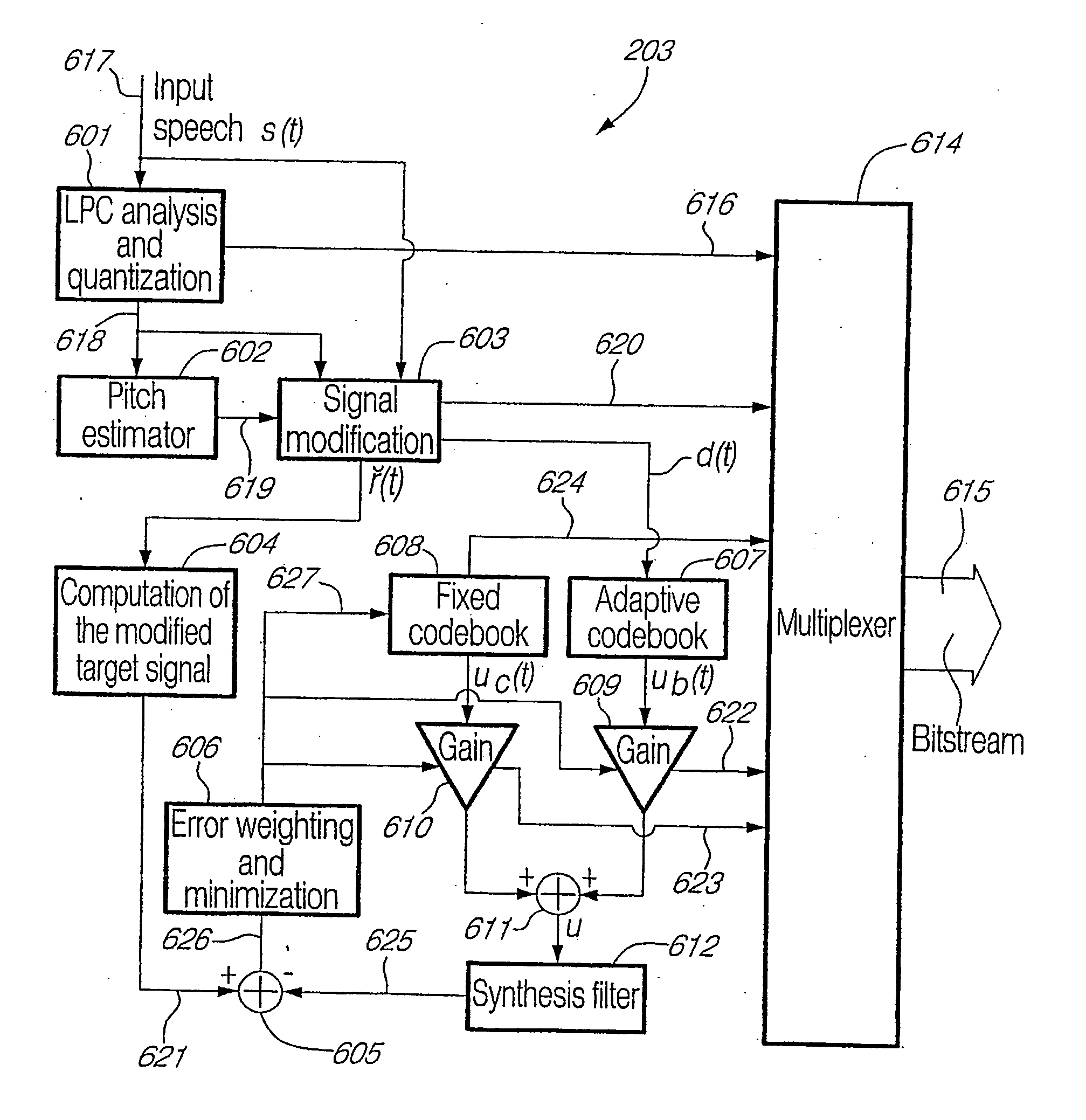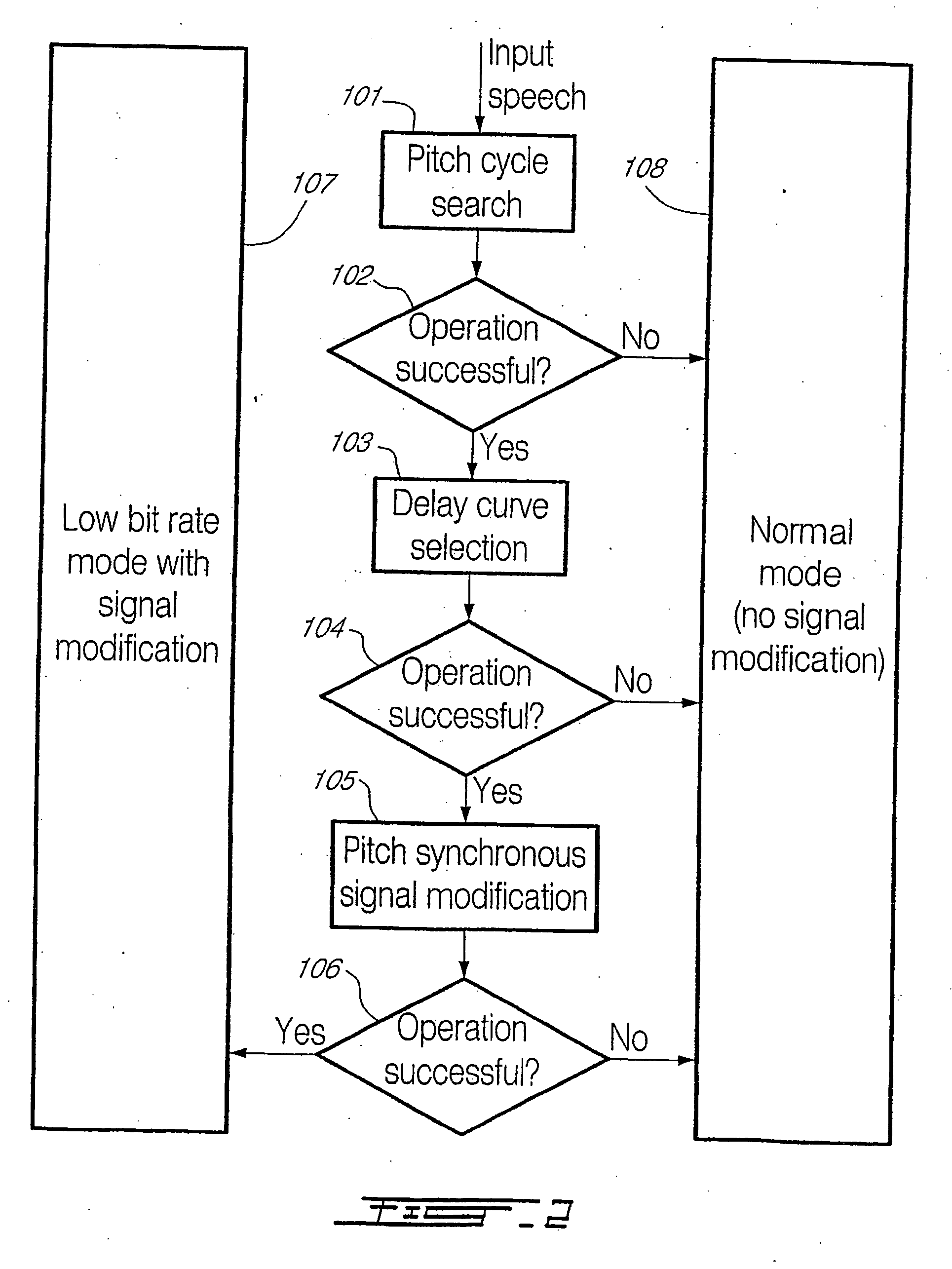Signal modification method for efficient coding of speech signals
a signal modification and speech signal technology, applied in the field of sound signal encoding and decoding, can solve the problem of consuming a substantial proportion of the available bit budg
- Summary
- Abstract
- Description
- Claims
- Application Information
AI Technical Summary
Benefits of technology
Problems solved by technology
Method used
Image
Examples
Embodiment Construction
Although the illustrative embodiments of the present invention will be described in relation to speech signals and the 3GPP AMR Wideband Speech Codec AMR-WB Standard (ITU-T G.722.2), it should be kept in mind that the concepts of the present invention may be applied to other types of sound signals as well as other speech and audio coders.
FIG. 1 illustrates an example of modified residual signal 12 within one frame. As shown in FIG. 1, the time shift in the modified residual signal 12 is constrained such that this modified residual signal is time synchronous with the original, unmodified residual signal 11 at frame boundaries occurring at time instants tn−1 and tn. Here n refers to the index of the present frame.
More specifically, the time shift is controlled implicitly with a delay contour employed for interpolating the delay parameter over the current frame. The delay parameter and contour are determined considering the time alignment constrains at the above-mentioned frame bou...
PUM
 Login to View More
Login to View More Abstract
Description
Claims
Application Information
 Login to View More
Login to View More - R&D
- Intellectual Property
- Life Sciences
- Materials
- Tech Scout
- Unparalleled Data Quality
- Higher Quality Content
- 60% Fewer Hallucinations
Browse by: Latest US Patents, China's latest patents, Technical Efficacy Thesaurus, Application Domain, Technology Topic, Popular Technical Reports.
© 2025 PatSnap. All rights reserved.Legal|Privacy policy|Modern Slavery Act Transparency Statement|Sitemap|About US| Contact US: help@patsnap.com



